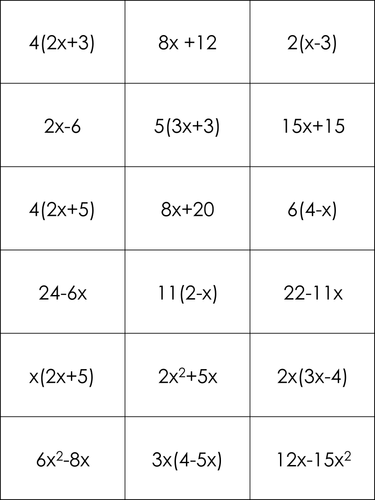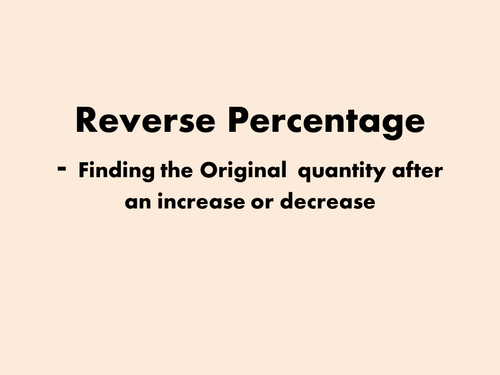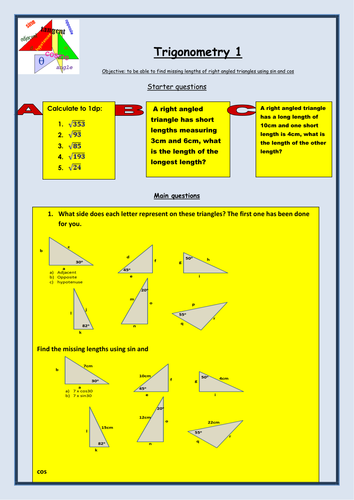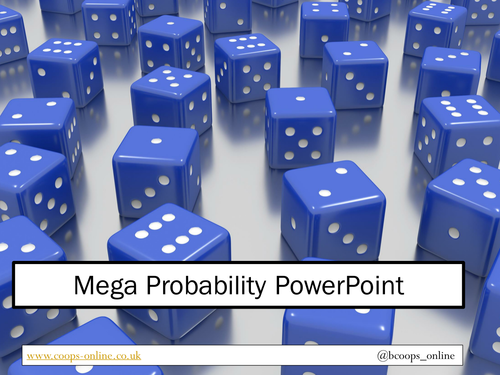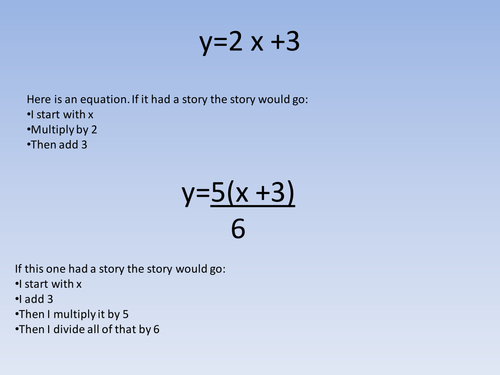
623Uploads
5497k+Views
2905k+Downloads
Math

Fraction; decimal percentage conversion test
A short end of topic test where students have to convert between fractions; decimals and percentages. Aligned to: 6.RP.A.3 , 4.NF.C.6 , 7.RP.A.2

Triangles quick test -- Maziarz Mapped
A quick 10 question test on a timer (20 seconds for each question) includes naming triangles and some easy missing angles. Answers are at the end for easy marking

Multiplying and dividing by negatives quick test
starter / concluding activity test on negative number multiplication and division, 15 seconds on each question, answer at the end.

Multiplying Decimals Test
10 questions on multiplying decimals, ten seconds for each, answers at the end, good for starter / wrap up.

Reverse Percentage PowerPoint
A powerpoint showing how to use multipiers to increase and decrease amounts as well as find original prices. There are some questions for students too.

Pythagoras worded question Handout
Some worded pythag questions with a starter on estimation, extention asks students to find the longest diagonal of a cuboid as this is the lesson I tend to teach after this one.please let me know what you think

Primes; squares and roots puzzle
A puzzle where students answer questions to get letters and clues and have to figure out who the mystery celebrity is. Questions are all related to primes; squares and cubes; roots and triangular numnbers. CC Aligned: 8.EE.A.4

Direct and Indirect proportion generator
This excel file gives 2 lists of numbers, one labeled a and one b, we are told that they are directly proportional and students have to work out how to get from a to b, the constant can be hidden and shown, and new sets can be generated. The next sheet is the same except for indirect proportion.

Percentage Increase and Decrease Super Sheet
This my attempt to create a sheet that ticks all the boxes.
The sheet includes:
Literacy section with key words and definitions
Write on the sheet starter
Lesson objective
(The above a set in a box to allow pupils to cut out and stick these into their book)
Three sets of questions to aid differentiation by task rather than outcome
A set of extension questions
Plenary questions to check understanding
Homework questions (differentiated)
Additional info on how to check if answers are correct and where this skill would be used in real life.
Coloured background and step by step instructions to help support SEND pupils.
This sheet is on percentage increase and decrease, originally using the multiplier method but easily adapted.

Powers starter
10 question with ten seconds for each, each question is a number raised to another number. answers at the end

True or false circle theory cards
The idea here is that each slide is put onto a card and students have to sort them into two groups true or false. For every false card students must draw an example of it being false (counter example).
This is my first resource going up here, please be nice.

Trig- finding lengths (sin and cos)
A handout for finding lengths in right angled triangles using sine and cosine. Starter has some rounding and 2 pythagoras questions.

Special number cards
Set of cards with numbers. Students have to try and split them into 4 groups. The groups are primes, squares, cubes, triangular numbers. Might be more interesting to not tell them the four groups and see what they come up with first.

Mega Probability PowerPoint
A collection of probability PowerPoints and quizzes. Contains mutually exclusive events, tree diagrams, sample space diagrams, listing outcomes, and so on and so forth. Lots of multiple choice quizzes and sets of questions with answers, all presented in a (hopefully) good looking presentation.
Hope you find it useful.

Estimation of height starter
Nothing fancy here, just a settler, 5 pictures to estimate length, could be followed up by a discussion on how people estimate or what could be considered a sensible estimate.

y=mx +c fill in the blanks settler
A simple paragraph to copy and fill in the blanks to settle a group.

What is the story of the big equation
A little starter I made for my group to remind them how to read equations. There is a little reminded about what I mean by the "story" of the equation then a big scary looking equation, the students then have to write its story.

Time flies (Circumference questions)
Some questions (with answers) about the distance a fly sat at the end of the minute hand of a clock would travel in different lengths of time. Second half asks for general expressions for d days, h hours, m minutes and w weeks.






